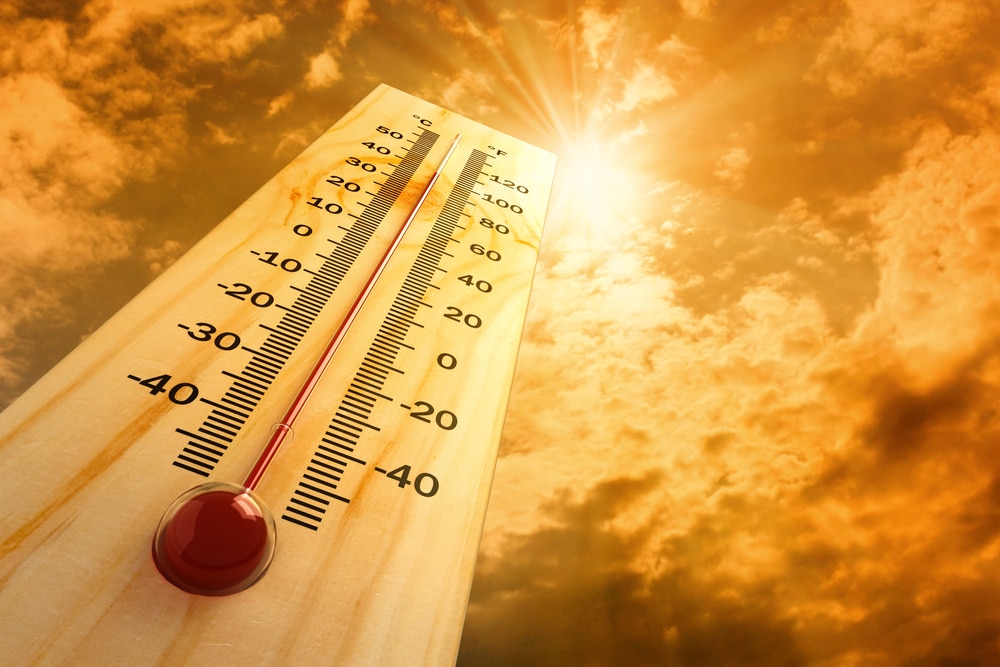(OPINION) High temperatures are not supposed to go above 100 degrees Fahrenheit in South America in the middle of winter. That is not supposed to happen. But it is happening.
In fact, we are witnessing some really freakish things happen all over the globe right now. The increasingly erratic behavior of the giant ball of fire that we revolve around is causing all sorts of problems.
In recent months scientists have identified the most sunspots that we have seen in decades, and there have been extremely powerful solar storms. Whenever the sun becomes very active, temperatures on our planet tend to be higher, and that is precisely what we have been experiencing.
South America is in the middle of winter at this moment, but it has literally felt like summer in recent weeks… It’s the middle of winter in South America, but that hasn’t kept the heat away in Chile, Argentina, and surrounding locations.
Multiple spells of oddly hot weather have roasted the region in recent weeks. The latest spell early this week has become the most intense, pushing the mercury above 100 degrees Fahrenheit, while setting an August record for Chile.
In Buenos Aires, where the average high on Aug. 1 is 58 degrees (14 Celsius), it surpassed 86 (30 Celsius) on Tuesday. “South America is living one of the extreme events the world has ever seen,” weather historian Maximiliano Herrera tweeted, adding, “This event is rewriting all climatic books.”
This isn’t normal. How would you feel if the high temperature where you live hit 100 degrees in January? In Buenos Aires, they have just experienced the hottest beginning to the month of August that they have ever recorded…
It was an unusually scorching winter day in Buenos Aires Tuesday, with thermometers in Argentina’s capital crossing the 30-degree Celsius mark (86 degrees Fahrenheit), the hottest start of August in 117 years of records, according to the country’s National Meteorological Service.
Temperatures in the South American country’s capital reached 30.1 degrees Celsius on Tuesday, beating the previous record for the first day of August by more than five degrees. The previous hottest Aug. 1 was set in 1942, when temperatures reached 24.6 degrees Celsius (76.3 degrees Fahrenheit).
Meanwhile, it also continues to be unusually hot in the northern hemisphere. In fact, people have literally been dropping dead from the heat in South Korea and Japan…
The extreme weather sweeping across Asia has claimed more victims, with South Korea and Japan reporting deaths from the sweltering heat and authorities in both countries issuing alerts this week.
And in Iran, the heat has been so intense that the government decided to literally shut the entire country down for two days this week…Iran on Wednesday began a two-day nationwide shutdown because of soaring temperatures, shortly after the Islamic Republic’s health ministry warned of a possible increase in cases of heat exhaustion.
Government spokesman Ali Bahadori Jahromi on Tuesday said that “unprecedented heat” had forced the closures of governmental offices, banks and schools, according to the state-owned Islamic Republic News Agency.
When temperatures are unusually high, that also means that storms are going to be unusually intense. In China, the city of Beijing just experienced “the heaviest rain in the city in at least 140 years”…
More than 80,000 people were relocated due to flooding in Beijing, where 29.3 inches (744.8 mm) of rain fell between Saturday and Wednesday, the heaviest rain in the city in at least 140 years, The Associated Press said. It is unclear how many people are still trapped due to the widespread flooding.
Needless to say, farmers throughout that region have been absolutely devastated by that much rain, and the Chinese government is going to be distributing hundreds of millions of yuan in emergency assistance…
China will allocate 432 million yuan ($60 million) in flood relief funds to support agricultural output hit by heavy rainfall in eight provinces including Hebei, the agriculture ministry said on Wednesday.
The fund is for replanting crops in flooded areas and purchasing goods to resume agricultural production, said the notification on the ministry’s website.
Here in the United States, drought is the big story right now. For months, farmers in the middle of the nation have been hoping for rain, but so far not enough has materialized. As a result, many corn and soybean farmers are really hurting…
As of late July, approximately 55% of US corn production and 50% of soybean production areas were experiencing drought conditions. Without a letup in the current Midwest heatwave, the potential size of the upcoming crop is getting smaller by the day. What is the potential impact on final yields? (READ MORE)










